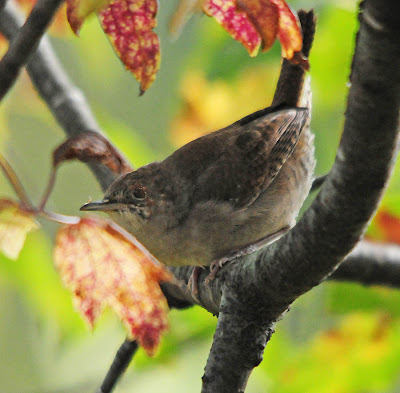I had forgotten the directions on my printer at home and was standing now on the wrong side of Sterling Peats after having made my way around bulldozers and large piles of peat, along earthen walls and skirting ditches. I was standing at the edge of a large black peat pond, looking at two birders on a grassy area on the far side. While I was pondering how to get over there, drive around or swim across (:-) a small bird landed near my feet and started picking at the mud, totally unconcerned by my present, a Least Sandpiper.
 |
| Least Sandpiper |
I retrieved my car and drove around the the area until I saw some cars parked along Muddy Pond Road near a dense thicket. I parked and I followed a narrow path through the thicket to the grassy area that I spotted before.
I joined the throng of birders attracted to Sterling Peats near Worcester, Mass, by the reports of Stilt Sandpipers and Buff-breasted Sandpipers, but had decided to pick the day after Labor Day to avoid the holiday traffic - to my great regret, it turned out: I had missed the Stilt Sandpipers.
Soon however, a very plain looking bird was slowly walking in the low yellowish grass, blending right in: a Buff-breasted Sandpiper! It took no notice of the three of us standing there.
 |
| Buff-breasted Sandpiper |
A small group of peeps had gathered at the edge of the pond some distance away, most of them Semipalmated Sandpipers but there were also two Pectoral Sandpipers.
 |
| Pectoral Sandpipers |
 |
| Semipalmated Sandpipers |
These birds had chosen this area as a stopover on their long-distance travel from their breeding grounds in the subarctic tundra and the boreal northern forest to their winter quarters in the grasslands of Argentina, Uruguay and Paraguay. From the Northeast they fly across the Atlantic Ocean through the Caribbean to South America. The tiny Least Sandpiper, for example, may log almost 2000 miles nonstop across the Atlantic, an amazing feat.
It's a great privilege for us to be able to observe them during their brief stopover here.
Thanks for stopping by. Please leave a comment.









































